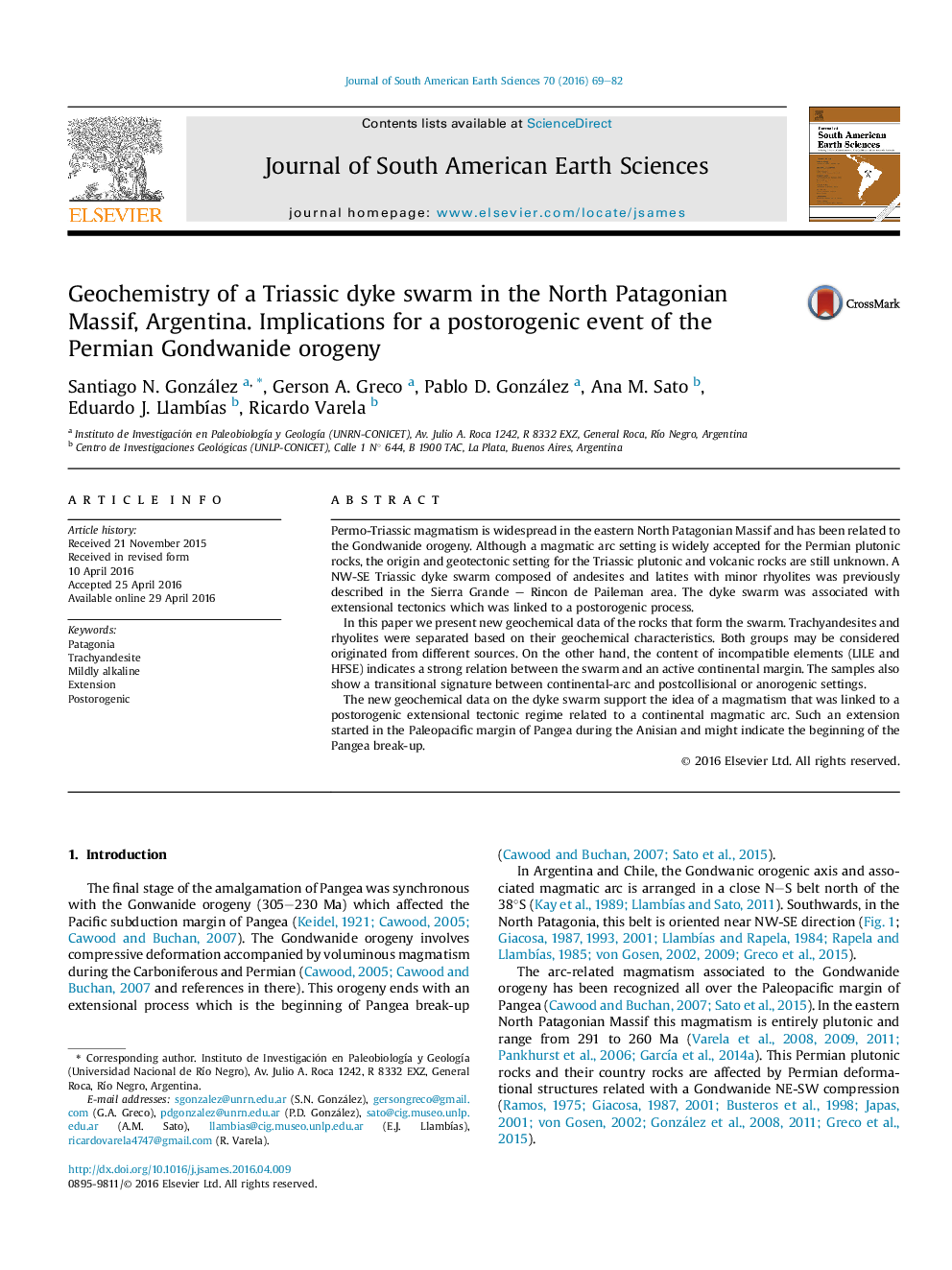| کد مقاله | کد نشریه | سال انتشار | مقاله انگلیسی | نسخه تمام متن |
|---|---|---|---|---|
| 4681983 | 1635140 | 2016 | 14 صفحه PDF | دانلود رایگان |

• A Triassic dyke swarm has been recognized at North Patagonian Massif.
• The dykes are mesosilicic with minor basic and acidic compositions.
• The rocks show a mildly alkaline trend.
• The difference in composition of the dykes might occur due to different sources.
• The swarm is related to a postorogenic Anisian extensional tectonic regime.
Permo-Triassic magmatism is widespread in the eastern North Patagonian Massif and has been related to the Gondwanide orogeny. Although a magmatic arc setting is widely accepted for the Permian plutonic rocks, the origin and geotectonic setting for the Triassic plutonic and volcanic rocks are still unknown. A NW-SE Triassic dyke swarm composed of andesites and latites with minor rhyolites was previously described in the Sierra Grande – Rincon de Paileman area. The dyke swarm was associated with extensional tectonics which was linked to a postorogenic process.In this paper we present new geochemical data of the rocks that form the swarm. Trachyandesites and rhyolites were separated based on their geochemical characteristics. Both groups may be considered originated from different sources. On the other hand, the content of incompatible elements (LILE and HFSE) indicates a strong relation between the swarm and an active continental margin. The samples also show a transitional signature between continental-arc and postcollisional or anorogenic settings.The new geochemical data on the dyke swarm support the idea of a magmatism that was linked to a postorogenic extensional tectonic regime related to a continental magmatic arc. Such an extension started in the Paleopacific margin of Pangea during the Anisian and might indicate the beginning of the Pangea break-up.
Figure optionsDownload as PowerPoint slide
Journal: Journal of South American Earth Sciences - Volume 70, October 2016, Pages 69–82